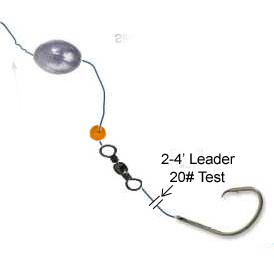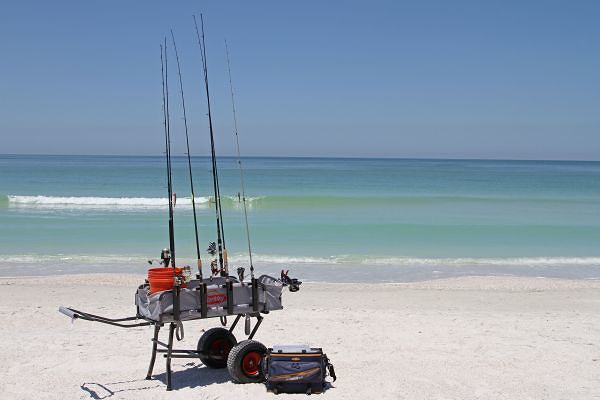Sheepshead migrate inshore during the winter in Florida. These fish are often found around pylons of bridges/piers, rock piles, oyster beds and anywhere that has barnacle growth. Feeding primarily on crustaceans, the single most effective bait for sheepshead is the fiddler crab.
Most sheepshead anglers use a ultra sharp J-hook that is threaded through the fiddler crab just inside of its legs. Theses anglers wait for the first sign of a big and set the hook with a rapid upward jerk. This has been a successful technique for many years, but there is a new trend in sheepshead fishing, the light wire circle hook.
How to Fish for Sheepshead with a Light Wire Circle Hook
A light wire, ultra sharp circle hook should be placed at the bottom of a 12-16″ 20lb fluorocarbon leader. Above the leader place a swivel and just enough weight to hold its place in the current that is being fished. This rig should be on a light action, medium strength rod with a spinning or baitcasting reel spooled with 10-15lb test mono or braid.
Hook the fiddler crab just on the inside of its legs, allow just the very tip of the hook to be exposed on the top of its shell. Lower the bait down to where a sheepshead is suspected to be. Be patient! When a bite is detected (with a light action tip, a small tap tap will be noticed) DO NOT set the hook. Wait for the rod tip to start to slowly bend as the sheepshead starts to swim away with he bait in its mouth. Once this happens start to real in and lift the rod tip up (not a hook set, just a lift up).
Circle hooks tend to hook a fish in the corner of the mouth. Because sheepsheads have very bony mouths and many teeth, hooking in the corner of the mouth, a mostly fleshy area, is easier then the top or the bottom of the mouth.
Beware that a medium-large sized fish can bend the hook quite a bit, so make sure not to use horsepower to bring in the big fish, finesse them. After fighting a large fish check the shape of your hook, if the shape has been compromised be sure to tie a new hook on the leader!


